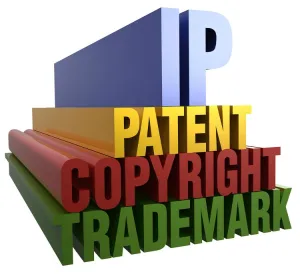Are you starting a new company or business venture? Launching an exciting new product or expanding into a new business line? Congratulations. Just remember, if you wind up with a high-growth opportunity, it can often pay big dividends to lay the legal groundwork up front, even on ancillary or non-product/market issues that may seem minor at the outset. Here are several key questions about intellectual property (IP) issues that every founder, entrepreneur or business leader should be asking from the beginning.
I. How have you already turned your good ideas into a potential business advantage?
The basic idea of an IP strategy is to make sure you take all the good ideas of your new venture and translate them into something – product, methods, brands, content, code – that can provide a material business advantage and that can be protected in a meaningful way. Doing this early and intentionally can pave the way to leverage additional development runway, softens competitive pressure, and supports valuation.
So – what is your good idea? How have you turned it into something tangible or fixed? What your idea is and what you are doing with it in your business (and how you want to keep others from profiting from your idea) are key issues in assessing how to build an IP strategy. Are you ready to walk through the next three questions?
II. Whose idea is (was) it?
In the bright (or dark) early days of a new venture, significant issues can arise as to who is responsible for conceiving a particular idea, product, feature, or design. These fundamental issues of co-inventorship or co-creatorship are critical to determine the correct protection of an idea. For example, failure to identify all inventors can invalidate a patent application, and “inventors” can be broadly defined (did someone outside the founder team shout out a critical feature improvement at an Idea Slam?) Similarly, development of copyrightable computer code by an independent contractor – despite the delivery of the completed application to the startup – may not automatically vest the copyright in the company under the “work made for hire” doctrine.
The significance of who is (or claims to be) responsible for the origination of an idea can become much more important later on, once it becomes obvious that a particular idea is a core patentable aspect or gives rise to a particular business advantage or market value. Founders should identify early on who specifically is involved in conceiving the idea and should arrange for those parties to be involved in the company from either an equity position or to have made assignment of all rights to another founder or member. Essentially you want to be able to rule out the issue of having someone who was at the table early but has since departed coming back later and claiming that your “good idea” was actually their idea (see, e.g., ConnectU, LLC [Winklevoss Bros]. v. Facebook, Inc. et al.)
III. Who owns the idea now & where is it held?
Unsurprisingly, the last question begets the next: who owns the idea right now? Do you have the appropriate assignment or transfer documents in place to ensure that either the appropriate founders or the company itself (or a holding company if advisable) is the record owner of all title in the IP? Or does the company have an exclusive license from a third-party, which may be necessary to do what it wants?
There can be some potential value involved in retaining the underlying IP rights at the individual or founder level early in a venture, particularly as those assets appreciate and could then be contributed to a business entity structure in the form of value, for example, just prior to a financing event. However, once things start living in different boxes or entities, it is important to make sure the correct licenses are in place related to the operating entity.
IV. What can you do to protect your idea?
A comprehensive IP strategy can involve assessing your design, product development, innovation and marketing functions early and fundamentally. Even for a start-up shop of two or three founders working on a single product or service feature, a variety of IP approaches can be available if early analysis and action is taken.
Some basic IP rights are obtained quite easily and with appropriate forethought can provide early protection for developing ventures. Other IP rights, like patents, require early and diligent effort along with a more significant investment.
Copyright Protection: US copyright law protects original works of authorship, which can take the form of writings, music, drawings, photographs, audio/visual recordings, 3-D sculptures, etc. Copyright arises at the moment of creation of a work of authorship, and copyright law largely allows you to prevent another from reproducing, distributing, performing, displaying, or making derivative works of the copyrighted subject. Copyright law can provide protection without any formal registration requirements, but even formal registration with the Copyright Office (which affords additional protections and damages in the event of infringement) is a straightforward and relatively inexpensive procedure.
Trademark Rights: In contrast to copyright law, US trademark law protects distinctive words, designs or other elements (smells, sounds, colors and shapes have all been trademarked) which are used to designate a business or the origin of a product or service. Trademark rights can be bolstered through the purposeful selection of a distinctive name – something “suggestive,” “fanciful,” or “arbitrary.” A good measuring stick: if you can go out and easily obtain your TRADEMARK.COM domain name, it may very well be distinctive and original (think “hotels.com” vs. “airbnb.com”). Trademark rights arise not from conception, but from use in the marketplace, among consumers – the party that comes up with a great branding idea owns nothing until the brand is put out in the marketplace. The upside is that common law trademark rights, which can be signified through the use of the “™” require only commercial use of the trademark. As with copyright registration, a business can choose to register its mark with the USPTO and gain additional statutory protections.
Patent Applications: Patents provide robust monopoly rights for useful inventions or ornamental designs that are new and non-obvious. Both design and utility patents can give rise to very strong IP protection, but typically only where an application is filed early in the invention’s product (i.e. within the first year of sale or public disclosure) – and even earlier where non-US patent protection is sought. Both issued patents as well as pending patent applications can be high-value IP assets and may be worth an initial strategic consultation with counsel prior to a public launch.
V. Next-level Steps
The points above are not necessarily a “choose one item from the menu” situation – multiple types of IP rights can be combined into developing even stronger forms of strategic protection. Less expensive design patents can provide “patent pending” protection of a new product, while utility patent application can be filed on the functional aspects as cash flow increases. Software code can be copyrighted and patented, leading to layered protection and alternative remedies. A successful product under patent protection can build its associated brand while enjoying an exclusive monopoly in the market, and the brand can form the basis for a marketing advantage or lucrative licensing well after the patent’s 20-year term ends.
But many of those next-level opportunities can be lost if essential questions of “what,” “who” and “where” aren’t considered – and dealt with, if necessary – early in the lifecycle of the new product or company.
This article originally was published in the May 2016 edition of the Elon Business Law Journal.





 />i
/>i

